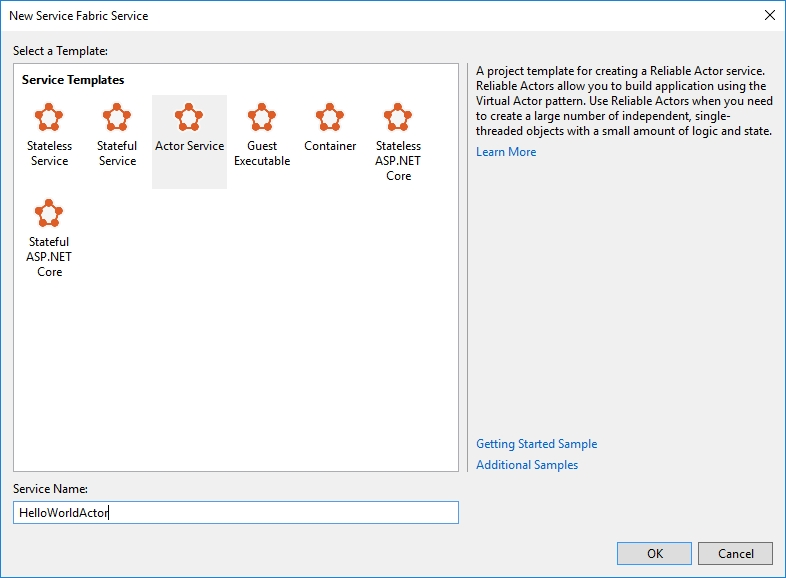Now that we have understood all the carious concepts of a Reliable Actors Application in detail, let us cement our learning by building a sample that demonstrates all the key concepts that we have learned till now.
Create a new Service Fabric application named HelloWorldActorsApplication in Visual Studio and choose the Reliable Actors template.
You'd need to specify a name for the Actor service in the template dialog, let's name the service HelloWorldActor:

Creating HelloWorldActor service
After the template finishes unfolding, you would find three projects loaded in your solution as follows:
HelloWorldActorsApplication: This is the application project that packages all the applications together for deployment. This project contains the deployment PowerShell script and the manifest file –ApplicationManifest.xml, that contains the name of packages that need to be deployed on Service Fabric cluster among other settings.HelloWorldActor.Interfaces: This project...



